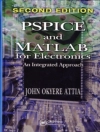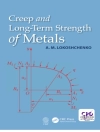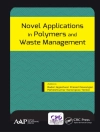A comprehensive and systematic treatment of our current understanding of the microfluidic technique and its advantages in the controllable fabrication of advanced functional polymeric materials.
Introducing and summarizing recent advances and achievements in the field, the authors cover the design and fabrication of microfluidic devices, the fundamentals and strategies for controllable microfluidic generation of multiphase liquid systems, and the use of these liquid systems with an elaborate combination of their structures and compositions for generating novel polymer materials, such as microcapsules, microfibers, valves, and membranes. Clear diagrams and illustrations throughout the text make the relevant theory and technologies more readily accessible.
The result is a specialist reference for materials scientists, organic, polymer and physical chemists, and chemical engineers.
Daftar Isi
Preface xiii
1 Introduction 1
1.1 Microfluidics and Its Superiority in Controllable Fabrication of Functional Materials 1
1.2 Microfluidic Fabrication of Microspheres and Microcapsules from Microscale Closed Liquid–Liquid Interfaces 3
1.3 Microfluidic Fabrication of Membranes in Microchannels from Microscale Nonclosed Layered Laminar Interfaces 4
1.4 Microfluidic Fabrication of Microfiber Materials from Microscale Nonclosed Annular Laminar Interfaces 5
References 6
2 Shear-Induced Generation of Controllable Multiple Emulsions in Microfluidic Devices 11
2.1 Introduction 11
2.2 Microfluidic Strategy for Shear-Induced Generation of Controllable Emulsion Droplets 12
2.3 Shear-Induced Generation of Controllable Monodisperse Single Emulsions 14
2.4 Shear-Induced Generation of Controllable Multiple Emulsions 16
2.5 Shear-Induced Generation of Controllable Multicomponent Multiple Emulsions 22
2.6 Summary 31
References 31
3 Wetting-Induced Generation of Controllable Multiple Emulsions in Microfluidic Devices 35
3.1 Introduction 35
3.2 Microfluidic Strategy for Wetting-Induced Production of Controllable Emulsions 36
3.3 Generation of Controllable Multiple Emulsions via Wetting-Induced Spreading 38
3.4 Generation of Controllable Multiple Emulsions via Wetting-Induced Droplet Coalescing 47
3.5 Summary 50
References 52
4 Microfluidic Fabrication of Monodisperse Hydrogel Microparticles 55
4.1 Introduction 55
4.2 Microfluidic Fabrication of Monodisperse PNIPAM Hydrogel Microparticles for Sensing Tannic Acid (TA) 55
4.3 Microfluidic Fabrication of Monodisperse Core–Shell PNIPAM Hydrogel Microparticles for Sensing Ethyl Gallate (EG) 62
4.4 Microfluidic Fabrication of Monodisperse Core–Shell Hydrogel Microparticles for the Adsorption and Separation of Pb2+ 67
4.5 Summary 75
References 76
5 Microfluidic Fabrication of Monodisperse Porous Microparticles 79
5.1 Introduction 79
5.2 Microfluidic Fabrication of Monodisperse Porous Poly(HEMA-MMA) Microparticles 79
5.3 Microfluidic Fabrication of Porous PNIPAM Microparticles with Tunable Response Behaviors 83
5.4 Microfluidic Fabrication of PNIPAM Microparticles with Open-Celled Porous Structure for Fast Response 90
5.5 Summary 103
References 103
6 Microfluidic Fabrication of Uniform Hierarchical Porous Microparticles 105
6.1 Introduction 105
6.2 Microfluidic Strategy for Fabrication of Uniform Hierarchical Porous Microparticles 106
6.3 Controllable Microfluidic Fabrication of Uniform Hierarchical Porous Microparticles 108
6.4 Hierarchical Porous Microparticles for Oil Removal 114
6.5 Hierarchical Porous Microparticles for Protein Adsorption 116
6.6 Summary 118
References 118
7 Microfluidic Fabrication of Monodisperse Hollow Microcapsules 123
7.1 Introduction 123
7.2 Microfluidic Fabrication of Monodisperse Ethyl Cellulose Hollow Microcapsules 124
7.3 Microfluidic Fabrication of Monodisperse Calcium Alginate Hollow Microcapsules 131
7.4 Microfluidic Fabrication of Monodisperse Glucose-Responsive Hollow Microcapsules 136
7.5 Microfluidic Fabrication of Monodisperse Multi-Stimuli-Responsive Hollow Microcapsules 144
7.6 Summary 158
References 158
8 Microfluidic Fabrication of Monodisperse Core–Shell Microcapsules 161
8.1 Introduction 161
8.2 Microfluidic Strategy for Fabrication of Monodisperse Core–Shell Microcapsules 162
8.3 Smart Core–Shell Microcapsules for Thermo-Triggered Burst Release 162
8.4 Smart Core–Shell Microcapsules for Alcohol-Responsive Burst Release 171
8.5 Smart Core–Shell Microcapsules for K+-Responsive Burst Release 174
8.6 Smart Core–Shell Microcapsules for p H-Responsive Burst Release 176
8.7 Summary 182
References 183
9 Microfluidic Fabrication of Monodisperse Hole–Shell Microparticles 187
9.1 Introduction 187
9.2 Microfluidic Strategy for Fabrication of Monodisperse Hole–Shell Microparticles 188
9.3 Hole–Shell Microparticles for Thermo-Driven Crawling Movement 188
9.4 Hole–Shell Microparticles for Pb2+ Sensing and Actuating 195
9.5 Hole–Shell Microparticles for Controlled Capture and Confined Microreaction 201
9.6 Summary 207
References 207
10 Microfluidic Fabrication of Controllable Multicompartmental Microparticles 211
10.1 Introduction 211
10.2 Microfluidic Strategy for the Fabrication of Controllable Multicompartmental Microparticles 212
10.3 Multi-core/Shell Microparticles for Co-encapsulation and Synergistic Release 212
10.4 Trojan-Horse-Like Microparticles for Co-delivery and Programmed Release 217
10.5 Summary 218
References 219
11 Microfluidic Fabrication of Functional Microfibers with Controllable Internals 223
11.1 Introduction 223
11.2 Microfluidic Strategy for Fabrication of Functional Microfibers with Controllable Internals 224
11.3 Core–Sheath Microfibers with Tubular Internals for Encapsulation of Phase Change Materials 224
11.4 Peapod-Like Microfibers with Multicompartmental Internals for Synergistic Encapsulation 235
11.5 Spider-Silk-Like Microfibers with Spindle-Knot Internals for 3D Assembly and Water Collection 241
11.6 Summary 248
References 248
12 Microfluidic Fabrication of Membrane-in-a-Chip with Self-Regulated Permeability 253
12.1 Introduction 253
12.2 Microfluidic Strategy for Fabrication of Membrane-in-a-Chip 254
12.3 Temperature- and Ethanol-Responsive Smart Membrane in Microchip for Detection 255
12.4 Summary 264
References 264
13 Microfluidic Fabrication of Microvalve-in-a-Chip 267
13.1 Introduction 267
13.2 Microfluidic Strategy for Fabrication of Microvalve-in-a-Chip 268
13.3 Smart Microvalve-in-a-Chip with Thermostatic Control for Cell Culture 272
13.4 Smart Microvalve-in-a-Chip with Ultrasensitivity for Real-Time Detection 281
13.5 Summary 289
References 289
14 Summary and Perspective 295
14.1 Summary 295
14.2 Perspective 295
References 297
Index 299
Tentang Penulis
Professor Liang-Yin Chu is the School Dean of Chemical Engineering at Sichuan University in Chengdu, China. Professor Chu has received numerous honours and awards including the National Natural Science Award nominated by the Ministry of Education of China (2003), Distinguished Young Scholar issued by the National Natural Science Foundation of China (2008), Distinguished Professor of Chang Jiang Scholars Program issued by the Ministry of Education (2009), Te-Pang Hou Chemical Science and Technology Innovation Award issued by the Chemical Industry and Engineering Society of China (2013). He has authored/coauthored more than 400 papers, 37 patents, 14 book chapters and four books. Currently, Professor Chu directs a talented research group with a diverse and interdisciplinary focus on the development of advanced functional materials, microfluidics, membranes and biomaterials.
Dr. Wei Wang is an associate professor of School of Chemical Engineering at Sichuan University in Chengdu, China. His research mainly focuses on functional materials, microfluidics, and interfacial sciences. He has authored and co-authored 76 papers that published in peer-reviewed journals. He was awarded many honours and awards, including the Emerging Investigator 2014 of Lab on a Chip (The Royal Society of Chemistry), Materials Horizons Paper Prize at the 8th Global Chinese Chemical Engineers Symposium (2016), and the Excellent Paper Award issued by the Organization Committee of the 3rd Asian Conference on Colloids and Interface Science (2009).












